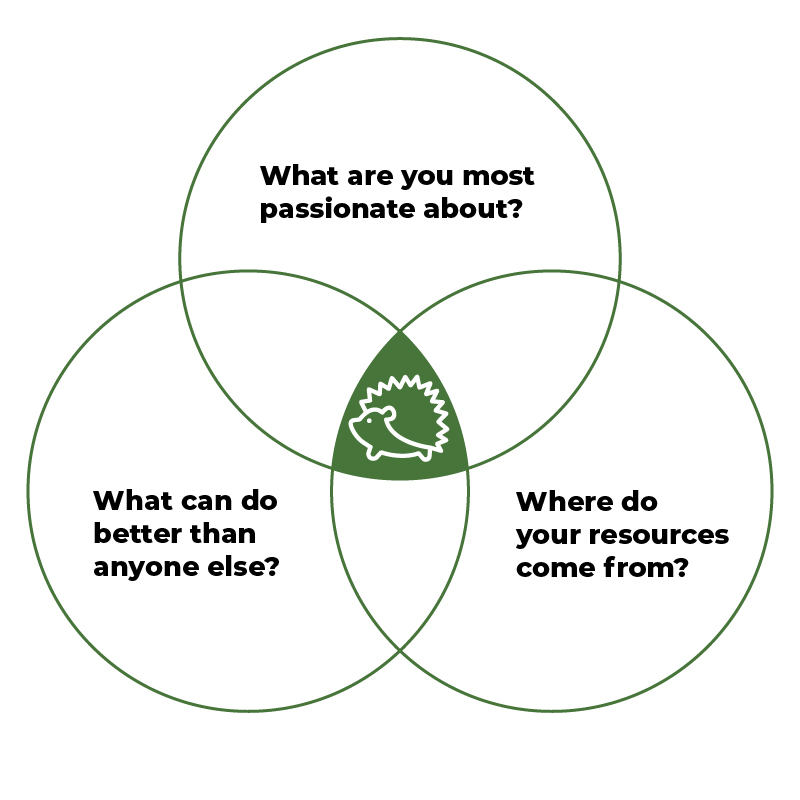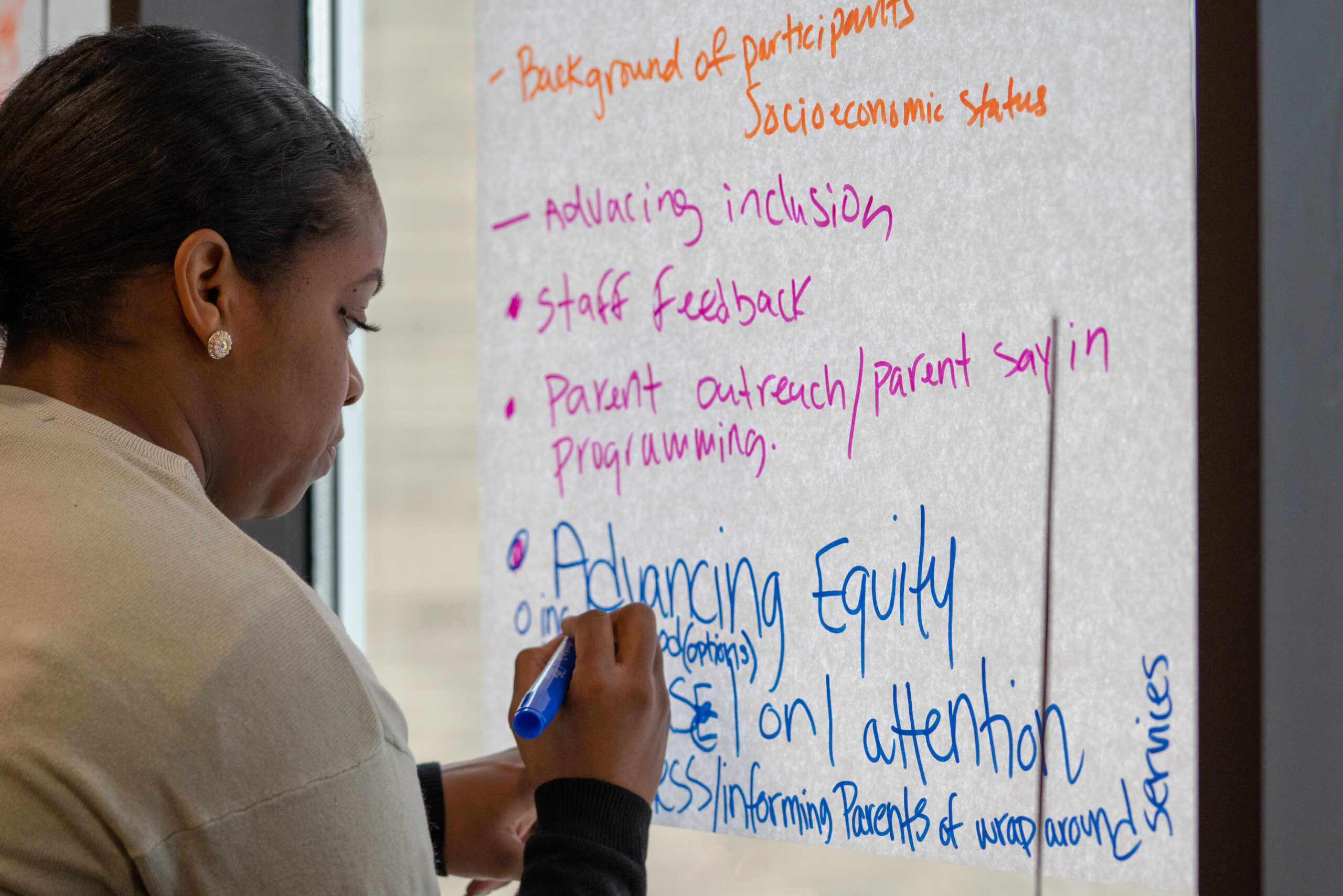A hedgehog is an animal that, at least in stories and parables, excels at one big thing. (Its opposite, the fox, is less focused so it does many smaller things.) Outstanding, healthy organizations tend to be more like hedgehogs once they find that one big thing that exists at the intersection of passion, ability, and resources.

How do you find your hedgehog?
Your hedgehog is the most powerful and strategic place to invest your energy and resources.
An organization that has found its “hedgehog” has identified the fundamental principle that unifies, organizes, and guides all its decisions. Leaders of these organizations develop a perspective that reflects penetrating insight and deep understanding. Finding your hedgehog offers an opportunity to focus on your core to build strength and a sustainable future.
Imagine the energy you can generate by doing work you are passionate about, that you are highly skilled in, and attracts support from your community, funders, and partners. That work is what we call your hedgehog.
Let’s explore those categories in more depth.
The clearer you are on your WHY statement the more obvious this will be. You may need to look beneath the surface. For instance, you may be a dance group, but your passion is giving voice to women. Or you may be a choral group whose passion is showcasing contemporary composers.
Like your passion, your core competency may not be obvious. A group of talented actors, for example, may be best at building community and getting people involved with their work. If your organization has identified one or two competitive advantages this circle may be easier to fill. Note that this question asks you to dream a little, and think about what you could be best in the world at, not necessarily what you’re best at now.
What attracts resources (for example, funding, volunteers, or in-kind donations) to your organization? Money is an obvious part of the equation, and it can be helpful to understand your revenue mix. However, you may also consider less tangible or measurable drivers, such as skill at relationship building, a gift of communication, or your valued place in the fabric of your community.
Once those circles are filled, it’s time to identify your hedgehog. It’s the activity or goal that fits snugly into all three circles by fulfilling your passion, leveraging your skills, and generating resources. Your hedgehog is the fulfilling work you do that energizes all three of these circles.
Pro tip: Take the time to do this right.
Developing your Hedgehog is a process of honing, and can take weeks or even months. Set aside time for one circle at a time in board meetings, or perhaps use this discussion as the basis of a board retreat. The reward will be clarity about identity and strategic direction—infinitely useful in communications and funding development.
Hedgehog Examples
-
Theatre organization
Hedgehog: Art at the intersection of identities
Deeply passionate about: We are passionate about art at the intersection of identities and changing the culture of theater
Best in the world: Creating an authentic space for artists to develop their own narratives
Drives the resource engine: Us. The artists and community members who are involved because they share our mission and passion
-
Youth performance organization
Hedgehog: Doing work that centers process over performance, is inclusive of all identities, and provides a high level of support to kids.
Deeply passionate about: Developing confident, compassionate kids through the performing arts
Best in the world: Radical inclusion, unconditional support, joyful execution
Drives the resource engine: Ability to create a second home
-
Local arts agency
Hedgehog: Creating, supporting, and celebrating projects that build community pride and connect to our scenic region.
Deeply passionate about: Celebrating the people, creativity, and nature of our scenic region
Best in the world: Sharing the confluence of arts, culture and nature that give the region its unique identity
Drives the resource engine: Connecting visitors to a sense of place and residents to a sense of home
Try it for yourself
Are you feeling inspired? It’s time to try it out using our worksheet.
PDF Word Document-
1
Gather key folks
Think about whose voices are represented. Which parts of your organization, or programmatic perspectives, are included in the team that is putting this together? Is it your board, staff, leadership, external stakeholders? Diversity in this group supports more powerful and equitable decision-making.
-
2
Discuss and list answers for each of the three questions
What are you deeply passionate about? What could you do better than anyone else? What attracts resources to your organization?
-
3
Determine what falls at the intersection of the three circles
Create a statement that summarizes these three ideas and identifies the activities or goals that fit snugly into all three circles. How can you move towards doing this work more often? How can you use your hedgehog in strategic planning and decision making?
